|
Would you rather see who can...shove the most marshmallow's in their mouth, chug a gallon of milk in an hour, OR swallow a spoon-full of cinnamon? Well much like Planking, these two feats have been just as prolific in popular and material culture as the Sunggie. For every generation its a different sort of challenge, where today it's Vodka eyeballing and smoking Smarties while yesterday it was sniffing Pixy Stixs and passing-out during Light as a Feather, Stiff as a Board. The real question is what happened to drinking a little NyQuil, smoking a joint, taking a shot, or drinking a beer? Instead kids today are of drinking hand-sanitizer and sticking vodka soaked tampons up their asses.
Its tough being a teenager, you have hormones flaring and your parents blaring. Lets start off the seemingly wholesome challenge of chugging a gallon of milk in less than an hour. First off, why milk? Well the properties of milk make it that much more difficult for your stomach and lower intestines to process, along with the fact the stomach can technically only hold a half-gallon of liquid.Your vomiting reflexes will most likely kick in, thus creating a white waterfall of mucus milk and curdling crud. It is hard to believe that nobody has ever died from this, aside from some fraternity fucks puking off a bridge onto coming traffic and causing an accident. Following this funk, the cinnamon challenge is the idea to swallow a spoonful of cinnamon with out spitting a sand storm. Although seemingly harmless, this one left one teen in the hospital for four-days with pneumonia and a collapsed lung. Cinnamon is so drying that it is nearly impossible to swallow, thus causing the participant to choke, gag, vomit, inhale grounds into the lungs, and run the risk of dying. Although not as dangerous, smoking smarties and sniffing Pixie Stix leaves particles in the lungs but at less velocity. As for butt-chugging or the alcohol enema, this is the most dangerous because it leads to faster intoxication and inability to vomit due to over intoxication, not to forget the direct poisoning of the intestines. And the most impressive of teen trend is binging on hand-sanzi, where through a distillation process involving salt, kids are turing the gel into a 120 proof moonshine. Yikes. So the the next time you want to catch a buzz, forget going to the bar, swing by your nieces or nephews for the underground shit.
1 Comment
July 23 is know as National Hot Dog Day, but is also Gorgeous Grandma Day (yuck), National Pink Day, and God only know's what National Day. There is a day for everything, for instance yesterday was National Tequila Day, today is Merry Go Day and tomorrow is All or Nothing Day. How can you keep the days straight with Paul Bunyan Day, Smoke & Mirror Day, Ugly Truck Day, Flitch Day, Petroleum Day,World Sauntering Day, Pancake Popcorn Day, Escape Day, Toothache Day, Public Sleeping Day, and my favorite Make Up Your Own Holiday Day. Where did this come from? Did someone just wake up one day and say "man I'm going to devote today to _____ and convince some idiots to celebrate it." Well it worked.
And if there is one thing the US is obsessed with it is Hot Dogs. Yes those slimly pink meat rods, made animal byproducts. It is actually by product of our German ancestry, where in 1870 Charles Feltman sold sausages in rolls at Coney Island. Sure nothing is more American than the New York Hot Dog, where neither the obesity nor Noah's Arch could stop them from boil-em, fry-em, grill-em, bake-em, put em on a sandwich, in Kraft Macaroni & Cheese, cook-m over a campfire, and most relevant buying the craziest devices to cook-em. Sure there are plenty of weirdos out their that eat-em raw,but fear not there are millions of Hot Dog doodads and gizmos to protect you from ebola. A toaster to heat your Hot Dog and toast you bun son, along with rotisserie machines distinctly devoted to dogs, a corn dog maker, and deep fryer, a Japanese style Sanrio rabbit that warms your weenier, and let's not forget Roast My Weenier. But more importantly you can spend $699 you can learn how to run your very own Hot Dog Cart. Yes ladies and gentleman there is a Hot Dog University where you learn the art of the cart and buy just buy Perry Belcher's book How to Make a Million Dollars off a Hot Dog Cart. The syllabus includes permit and license procedures, equipment operation, setting up your cart, taste testing, and a plant tour seeing first hand how Hot Dogs are made. First off I'd like to point out that if you are serious about running a Hot Dog cart, you're first move should not be to waste your money on this class, along with travel, but to invest it into your business. Second maybe we should think about having a Hot Dog Cart, the NY times quoted that at times a seller can make up to $750 a week, while the vendors can make well over six figures a year. So don't knock the dog. With over a 100 million sold, it can be said that over 30% of the United States or 1.5% of the world has owned a George Foreman Grill (GFG). Personally I don't think I know a single person who hasn't owned or used one. George Foreman made grilling accessible, all the while coercing folks into believing its healthier and cleaner. However if you've ever owned a GFG you know what a pain in the ass it is to clean. Sure the grease is contained in a little corn-cob holder, but besides washing the container, you have to scrub hot grill surfaces. Then after several uses you'll wonder if the damn thing causes cancer, from the chipped Teflon to the Hetercyclic Amines (HCAs) and Polycyclic Aromatic Hydrocarbons (PAHs) found in grilled meat.
George Foreman is a two-time World Heavy Weight Champion, Olympic gold medalists, and has only lost 5 of his 81 fights. His most poignant loss went to Muhammad Ali in the 1974 Rumble in the Jungle. Besides boxing, Foreman is a husband (married 4 other times), a father of twelve, an author, philanthropist, ordained Christian minister, and entrepreneur. After a religious epiphany in the 80's, Foreman went on to become a minister and reenter the boxing world in 1994. This comeback allowed him to defend his heavy weight title, where following the fight Foreman was approached by the manufacturing company Spectrum and inventors Michael Boehm and Robert Johnson to promote a lean-mean grilling machine. Foreman was known for consuming two low-fat burgers before each match, which ignited his influential product endorsements. In the beginning, Foreman received 40% of the profits from every GFG sold, profiting to a $4.5 million a month in payouts, and obviously couldn't go on forever. So following the GFGs success, Foreman sold the rights to his name for $137 million dollars in 1999. Nevertheless, its plausible this money went quick especially with four ex-wives, and twelve children. Which is why the GFG is an ever evolving piece of furniture, with newer designs and accessories. For instance newer models now have Blue Tooth so you can play your iPod and music through your iGrill, along with an extension cord allowing your electric grill to go outside. What's next the Electric Beard Trimmer Grill, Sonicare Electric Toothbrush Grill, Inflatable Electric Air-Mattress Grill, or the Macbook-Grill? Some choose scented candles while others pick Ear Candling. Yes, you heard me correctly (well not if you have a candle in your ear) but Ear Candling is the homeopathic phenomenon where wax is excavated from your ear. Also known as Coning, a wax coated tube is placed in one's ear where it is then lit on fire which then creates a suction thus pulling out wax, toxins, and bad chakras. Well that is a lot of pressure for a little flame.
Most doctors and practices identify Ear Candling as an unsafe alternative medicine where more harm than good is likely to result. Most Ear, Nose, and Throat ENT doctors say that ear wax is harmless and you shouldn't stick anything in your ear, not even a Qtip, much less a candle. Yet, Ear Candling is still commonly practice around the world. So whether you're looking to cleanse your chi or you suffer from a terrible ear infection, go ahead light up. Risks include catching on fire and loss of hearing, but heck think of them as added incentives and a bit of excitment. The best part is the cutting open of the cone at the end where before you vomit from grossness you see what is your supposed inner ear's wax, but let's be honest it's the candles' wax. Between your Bose stereo system and your Beats headphones you were already prematurely loosing your hearing, which any ENT doctor agree with. Maybe you Ear Candling practitioner Wanda was at fault? Although she did have her School of Fengshui certificate hanging on her RV wall. However running on repeat in your silent head is Wanda's scratchy smoker voice saying "alls I had to do was read a website and print the certificate." Well let's not dwell on the past, your chi is cleansed and with this added silence you'll have a perfect place to meditate, free from distraction, zen absent from car alarms and classical music. We often take for granted how incredible electricity is and how important it is in our lives. With just the flick of a switch there is light. Like many things, we often fail to recognize the "behind the scenes," where the free movement of atoms' lost electrons generates our sought after electric current. Whether it is your laptop or your ice cream maker power's needed. But it's the moments when the power is out or a bulb burns out that we all instantaneously reflect on the power of power.
So after Joseph Enterprises got its start with the Chia Pet, in 1985 they patented The Clapper. The devise plugs into any standard US electrical outlet, where it automatically turns appliances on or off via clapping. In addition to the Chia Pet, this was one of the earliest As Seen on TV products where The Clapper's catchy little jingle "Clap on, Clap off, The Clapper..." easily stuck in your head. The Clapper has been featured in The Simpsons, Uncle Buck staring John Candy, and Tyler Perry's movie Meet the Browns, but before anything else it was the infamous infomercial that got the clapping going. But let's take a deeper look at The Clapper, no not the STD or the new dance, the one where you put your hands together to dim the lights. When did flicking a light switch or turning a lamp's on/off knob become so difficult? Those tasks require just as much effort as clapping, and not to mention the sex inherently associated with The Clapper's use. Now if you are a thousand year's old or a person with disabilities, sure it makes sense for you to own The Clapper. But for everyone else it seems rather impractical; where every time your doorbell rings you have to reset your alarm clock and microwave, while you're phone and laptop is never charged because of the dog's incessant barking. Not to mention the seizure you'll suffer from during The Clapper's strobe lighting effects. So save yourself the $20 buck or give your grandma the clap. As if having actual pets, plants, and children wasn't hard enough, now you can have you digital cake and eat it too. Although digital pets were mostly popular in the late 90's, Furbys and Tomagotchis are making a come back.
The Furby is a fuzzy little Gremlin robot, who requires love and attention, along with several AA batteries to survive. This little owl-gerbil creature was invented in 1998, where over 40 million have been sold across the globe. Furby speaks Furbish which has been translated into 24 languages and allows them to interact via touch and vocal recognition. Furby also interacts with other creatures of it's kind, and even has it's own little babies called Furblings. McDonald's released a Furby Happy Meal toy in 1999, where today the set of 80 is going for $899 on Ebay. If you want the real thing, Furbys have been re-released with the larger one going for $35 and the Furbling starting at $15. Now if you think this is rather expensive, you'll be be please to know they now come with an app. A few years prior to the Furby, the Japanese company Bandai cornered the market with Tamagotchis. These are tiny round key-chain devices house a video-game manipulated by 3 buttons. The premise is aliens came to earth and the Tamagotchi is its egg which you again have to monitor. Originally the software was very primitive, requiring attention every few hours and thus created a serious distraction for employers and teachers, in the end you could leave your toy alone and still prevail. Bandai Nameco 2013 annual revenue was ¥487B, meaning these little things along with Dragon Ball Z, Strawberry Shortcake, Power Rangers, Thundercats, and Pack-Man are a gold mine. Recently a vintage 1998 Tomagatchi was priced at $435 and a Tomagotchi phone is going for $5000 on Ebay, which seems insane since easily buy a used car for that amount. Obviously digital pets are popular, but why? Is it because they entertain children or possibly prepare them for their future parenting roles. Somehow this makes sense, but then why would adults want digital pets? Could it be a compensation for missing relationships? Well after speaking with a friend who is a sex therapist, he convinced me that all things possess some innate sexuality. Sigmond Freud argues this in The Sexual Abberation where the sexual object is therein defined as a desired object, and the sexual aim as what acts are desired with said object. So the Tomagotchi relays some sort of pornographic Japanese anime, along with classical and historical subservience of a Gesha. While on an opposite spectrum, the Furby could be said to ignite a form of Bestiality and a Paraphilic Infantilism. I'm not saying every digital pet owner is a pedophile, but it does force me to question why any adult needs a $5000 Tomagachi telephone or a $18,000 collection of Furbys? Also what do you get if a Tomagachi and Furby re? What exactly is real? Well in today's post-modern world, one must go through an existential crisis to decipher their own reality. We live somewhere midst a physical and digital world, where it's often difficult to determine what exactly is real. Do we value our self worth on Facebook likes, Instigram followers, and re-Tweets? Is it easier to live life through others by watching reality TV and following people online?
In 1992 MTV began a seemingly never-ending attempt to tell/sell so-called the Real World. Yes a true story, where seven strangers are picked to live in a house, live and work together, have their lives taped to find out what happens when people stop being polite and start getting real. This was the first of many stepping stones leading into popular cultures love affair with reality TV. On June 17, 1994 viewers around the United States gathered together to watch the infamous police chase, where O.J. Simpson driven by Al Cowlings in a white Bronco were followed by over a dozen police cars on LA's 405. The chase lasted an hour and forty minutes, as very low speed, while O.J. held a gun to his head after being charged for the murder of his ex-wife Nicole Brown Smith. The chase holds records not only for captivating audiences but record Domino's pizza sales. Interesting enough, this was the Kardashian families fortuitous entrance into the limelight, where Robert Kardashian was OJ's lawyer and his wife Kris was Nicole's best friend. Although unbeknownst at the time, this has parlayed not only into fame and fortune, or Kanye and Kim's photo breaking Instigram and Twitter. Even though this seems like ages ago, the 90's were only stepping stones in the development of today's reality TV. Although often forgotten, television was devised to capture reality (i.e. the news), all the while providing programing to to escape reality. The first US news program aired in 1930, but it wasn't until 1940's when CBS hosted regularly scheduled nightly news. One of the first pivotal news reports was the bombing of Pearl Harbor, followed by the networks capturing everything along the way from the assignation of JFK, MLK, to the moon landing, 9/11, and hurricane Sandy. As an escape from reality we've had Leave It To Beaver, Three's Company, The Cosby Show, and Modern Family. But somewhere in time, these lines of reality and faux-reality got skewed. What may be someone else's reality such as American Idol, Survivor, Project Runway, Keeping up with the Kardashian's, Who Want's to be a Millionaire, Home Makeover, and Jersey Shore is in fact another person's faux-ality. Reality TV has received a ton of criticism because of it's use of the term "real" and that it is supposedly unscripted yet highly choreographed and edited. Reality TV highlights personalities and drama, whereby capturing uncomfortable scenarios it often exploits, humiliates, and alienates some participants, while others are rewarded. Today you have a million different shows thus complementing our individuality and eradicate emotions. This variety of TV allows us to live vicariously through others, turn off OR on our brains, experience extrodinary lives. In some weird way Reality TV is then somewhat superimposed into our lives, where when we're fishing we think of the Deadliest Catch, or shopping think of the Kardashians. If Abe Lincoln, Walter Cronkite, Ed Sullivan, or Johnny Carson turned on the TV today, they'd think we were all bipolar and watching TV is like a Choose Your Own Adventure book we can all experience the great outdoor spirit of Survivor, learn how to remodel a house with HGTV, and go shopping with the Rich Kids of Beverly Hills. Just remember even though this allows us to experience alternative lifestyles and emotions it is not real, ultimately you are staring at a box, and viewership proliferates programing. |
LAJ
100 Objects of Popular and Material Culture is an blog exploring the manifestations of human consumption and commodity-ization. The purpose of this experiment is to explore material and popular culture in contemporary society by using objects and concepts to prompt wider questions and reflections. So by emulating The British Museum's and Neil MacGregor's format of A History of the World in 100 Objects I plan to satirically analyze and reinterpreted 100 material culture objects over the course of 2014. Material Culture is the study of our culture's consumption of stuff; namely the manifestation of culture through material productions where people's perceptions of objects is socially and culturally dependent. With this, objects reflect conscious and unconscious beliefs on the the individuals who fabricated, purchased, or used them, and by extension the society where they live. So examining materiality, cultural truths and societal assumptions may be discovered. As anthropologist Arjun Appaduai states "in any society the individual is often caught between the cultural structure of commodity-ization and his own personal attempts to bring a value and order to the universe of things." Objects and commodities make up a much larger symbolic system consisting of want and need, socio-economic status, fashion, etc. Often times form follows function whether the commodity, market, and or consumer forever evolve around one-another. Philosopher Pierre Bourdieu's theories of capital flow full circle; where regardless if you are a minimalist or a hoarder the world is made up of things and everyone will leave their footprint on the earth. So by humorously analyzing marketed objects and concepts, hopefully this blog will provide further incite into ideas of over-consumption, a disposable society, consumerism vs. anti-consumers, planned obsolescence vs. sustainability, as well as the greater good of mankind and future generations. Archives
March 2015
Categories |








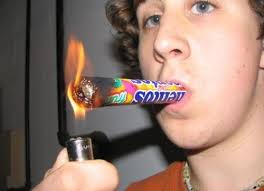




















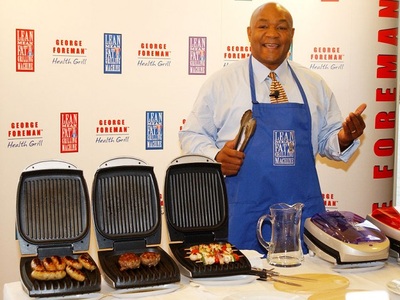



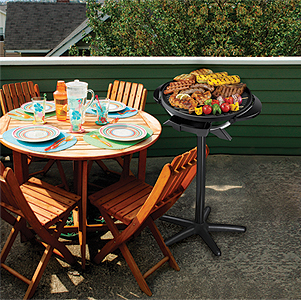



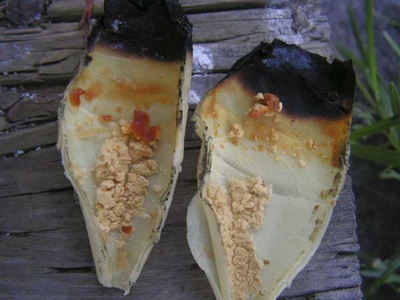




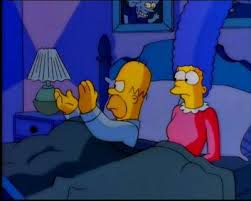


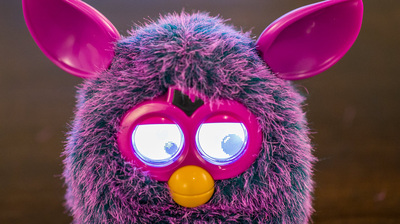

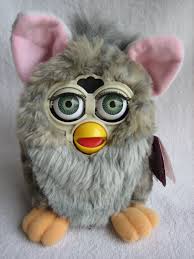


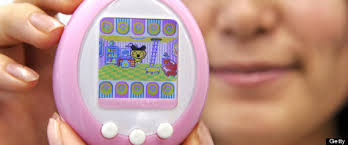








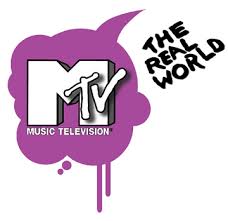
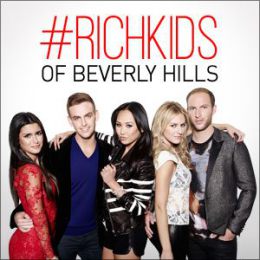

 RSS Feed
RSS Feed